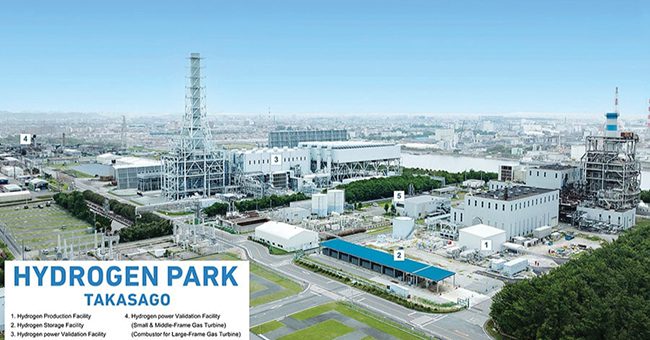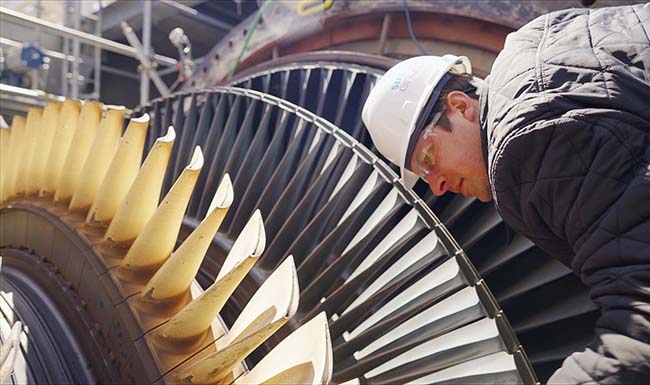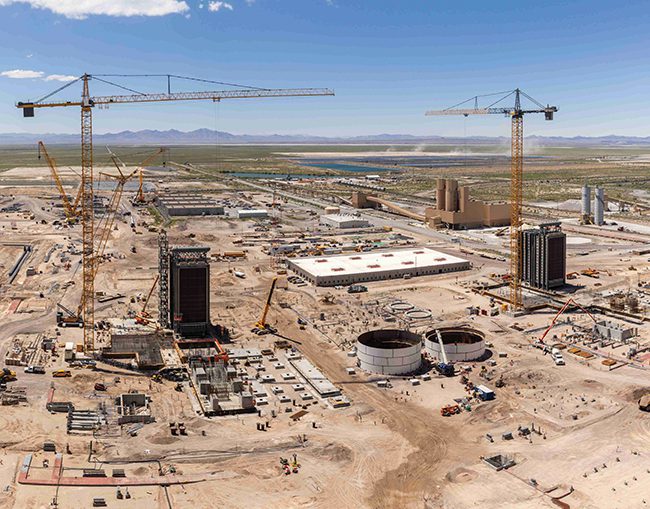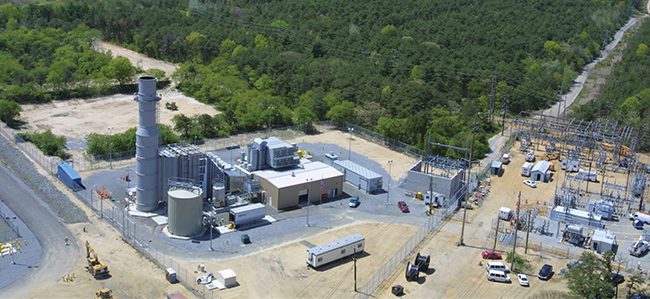Gas Turbine and Hydrogen Technologies Grow Together
The future of gas turbines and hydrogen are intricately intertwined. Gas turbine manufacturers know that they need their equipment to be ready to operate on higher levels of hydrogen as electrolysis technology advances, production projects come online, and clean hydrogen becomes more readily available to help end-users decarbonize their power systems.
In May 2023, the U.S. Environmental Protection Agency (EPA) proposed five separate actions under Section 111 of the Clean Air Act addressing greenhouse gas (GHG) emissions from fossil fuel-fired electric generating units. Among the actions were proposed emission guidelines for GHG emissions from the “largest, most frequently operated existing stationary combustion turbines” and a solicitation for comments on approaches for emission guidelines for GHG emissions for the remainder of the existing combustion turbine category.
Within the 181-page proposed rule published in the Federal Register is a best system of emission reduction (BSER) pathway that would require the co-firing of 30% (by volume) low-GHG hydrogen in baseload gas turbine units by 2032, ramping up to 96% by volume by 2038. While EPA Administrator Michael Regan on Feb. 29, 2024, indicated the agency would drop requirements covering existing natural gas–fired power plants in its final Section 111 GHG rule, which is expected to be published in April 2024, gas turbine original equipment manufacturers (OEMs) understand that developing greater hydrogen co-firing capabilities in their gas turbines remains a critical need, as it is possible such requirements could be stipulated at some point in the future.
Furthermore, GHG regulations are not solely a U.S. priority. Many other countries are also working on measures to decarbonize their energy systems and could impose regulations that OEMs will need to help plant owners meet. Therefore, research and development (R&D) on advanced combustion systems allowing up to 100% firing of hydrogen in gas turbines is a goal for virtually all of the major gas turbine OEMs.
Hydrogen Supplies Expected to Grow
In January, experts from Siemens Energy, Mitsubishi Power, and GE Vernova, among others, gathered on stage at POWERGEN International in New Orleans, Louisiana, for a Mega Session titled “The Decarbonization Journey for Dispatchable Gas Turbines—2032 and Beyond.” Bobby Noble, program manager for Gas Turbine R&D with EPRI, moderated the session, which included presentations given by Jason Jermark, vice president—Global Services Operations, Gas Services, Siemens Energy; Ben Thomas, senior manager, Hydrogen Production Engineering, Mitsubishi Power Americas; and Jeff Goldmeer, Global Hydrogen Value Chain Leader, GE Vernova.
Noble began the session by explaining how regulations are behind at least some of the actions OEMs are taking. In Jermark’s presentation, while not disagreeing with Noble, he took it a step further by noting how tax credit changes and the Inflation Reduction Act (IRA) in the U.S., and carbon tax developments in Europe and Asia, are also leading to expanded interest in hydrogen.
“Hydrogen provides a nice alternative to existing fuel sources, specifically natural gas,” Jermark said. “It’s very versatile. It’s very abundant. We have experience using it. And, we’re able to effectively show it is possible to use it in a variety of ways. For example, Siemens Energy on the co-firing front, it’s not well-known across the industry, but we’ve been using hydrogen in various applications for over four decades now.”
Yet, when the topic of co-firing comes up, Jermark said, the “elephant in the room” revolves around supply. He suggested that a few years ago he was skeptical that enough hydrogen could be produced to have a meaningful impact on the power generation sector, but after seeing the speed at which production capabilities are changing, he sees how important hydrogen could be in the future.
“The number of projects that have been announced globally increased by about four-fold in the last few years and continue to accelerate,” he said. Specific to Siemens Energy’s capabilities, Jermark referred to a new gigawatt electrolyzer factory in Berlin that was officially inaugurated last November. Siemens Energy and Air Liquide expect a ramp-up to at least three gigawatts by 2025 with potential for more. The company estimates that with three gigawatts of installed electrolysis capacity, an average of 300,000 metric tons of green hydrogen can be produced per year when operated with renewable energies.
Electrolysis Technology
The Berlin factory will produce stacks based on proton exchange membrane (PEM) technology, which Siemens Energy says is particularly good at following intermittent renewable energy supply. In Europe, a number of low-carbon and renewable large-scale hydrogen projects are already under development. One, the Air Liquide Normand’Hy 200-MW electrolyzer project, is under construction near Port-Jérôme, France. The Normand’Hy project is expected to be one of the first projects supplied with equipment from the Berlin facility. Siemens Energy is also working on several other large-scale electrolyzer projects, such as Kassø in Denmark and FlagshipONE in Sweden, which will both provide hydrogen at least partly for the synthesis of e-fuels for shipping.
Meanwhile, Mitsubishi Power is developing other hydrogen production technologies, including solid oxide electrolysis cells (SOEC), anion exchange membrane (AEM) water electrolyzers, and next-generation turquoise-hydrogen production technology that produces hydrogen without emitting CO2 through the pyrolysis of methane into hydrogen and solid carbon. Mitsubishi Power is developing these fundamental technologies at the company’s Nagasaki Carbon Neutral Park, and plans to achieve commercialization following hydrogen production validation at its Takasago Hydrogen Park.
Mitsubishi Power has a long history of validating its gas turbine technology in a demonstration plant, known as T-Point, at its Takasago Machinery Works facility, located about 50 kilometers west of Kobe, Japan. The hydrogen park was recently added to the site; it entered full-scale operation in September 2023. Mitsubishi Power said the park “aims to improve product reliability through the validation of hydrogen co-firing and 100% hydrogen firing of gas turbines, while also implementing successive expansion with the introduction of next-generation hydrogen production technologies.”
Takasago Hydrogen Park (Figure 1) is divided into sections according to three hydrogen-related functions: hydrogen production, storage, and utilization. In the production area, an alkaline electrolyzer manufactured by HydrogenPro AS of Norway with a hydrogen production capacity of 1,100 normal cubic meters per hour (Nm3/hr), which Mitsubishi Power said was the highest in the world when it entered service, is operational. The hydrogen produced is stored in equipment with a total capacity of 39,000 Nm3.
 |
|
1. Mitsubishi Power says Takasago Hydrogen Park is the world’s first integrated hydrogen validation facility. It is divided into three sections: hydrogen production, storage, and utilization. Courtesy: Mitsubishi Power |
End-Users Need Advanced Technology
As hydrogen availability expands, gas turbine owners are starting to demand the flexibility to use it in varying degrees (Figure 2). “The industry is absolutely asking for: ‘We want units to be able to burn hydrogen. We want to make sure they’re future-proof. We want to show that we actually have the tangible real capabilities to do this,’ ” Jermark said. “If you look across our entire product portfolio of gas turbines—it’s around 20 different products that we support today—and each and every one of them has some aspect of hydrogen co-firing—either development, rig testing, field testing—that’s either in progress or taking place.”
 |
|
2. The 830-MW High Desert combined cycle power plant in San Bernardino County, California, recently completed FX performance upgrades and advanced ultra-low-NOx (ULN) combustor upgrades on its three Siemens Energy SGT6-5000F gas turbines. The ULN combustor modifications allow for the utilization of hydrogen as a fuel source in the future. Courtesy: Siemens Energy |
And the interest is global. “We’re not seeing, necessarily, geographic pockets of developments, and customer push and interest,” noted Jermark. “It’s really happening around the world.”
Mitsubishi Power has plans to operate a commercial unit on up to 30% hydrogen very soon. That’s why the validation of 30% hydrogen co-firing at the T-Point 2 combined cycle power plant validation facility in 2023 was so important. The testing was done with a Mitsubishi Power JAC large-frame gas turbine (450-MW class). “We announced 30% hydrogen by volume late last year, where we ran on a 1,650-degree-Celsius firing temperature in the gas turbine,” stated Thomas.
The Pioneering ACES Project
The first project Mitsubishi Power’s validation work supports is the Advanced Clean Energy Storage (ACES) project in Delta, Utah. “We are going to be running hydrogen in a commercial unit next year—2025,” Thomas proclaimed, in reference to the ACES project. “This project is real. It’s happening. It’s going into hot commissioning and the salt caverns are being solution-mined right now.”
The ACES hub has been designed to convert about 220 MW of renewable energy to 100 tonnes per day of green hydrogen, which will then be stored in two massive salt caverns capable upon startup of storing more than 300 GWh of dispatchable clean energy. The hub will support the Intermountain Power Project (IPP) Renewed project (Figure 3).
 |
|
3. In June and July 2023, Mitsubishi Power delivered two M501JAC advanced-class gas turbines to the Intermountain Power Project Renewed project, which is under construction in Utah. Courtesy: Mitsubishi Power |
IPP originally included two coal-fired units with a combined capacity of 1,900 MW. The IPP Renewed project involves the retirement of the existing coal-fueled units; construction of an 840-MW hydrogen-capable gas turbine combined cycle power plant; modernization of IPP’s Southern Transmission System linking IPP to Southern California; and the development of hydrogen production and long-term storage capabilities. Once finished, IPP will use renewable energy–powered electrolysis to produce hydrogen, storing it in underground salt caverns for use as fuel in the gas turbines. The units will initially run on a blend of 30% green hydrogen and 70% natural gas, incrementally expanding to 100% green hydrogen by 2045.
Yet, while the desire for hydrogen-burning capability may be universal, Thomas said there is no one-size-fits-all solution. He suggested decarbonization plans in Texas, New England, the Southeast, and the Western U.S. are all very diverse. “Really, it’s so regional. It’s so nuanced. Every location has different needs,” he said.
With the need growing, Mitsubishi Power has further hydrogen validations planned in the not-too-distant future. For example, the company said it will use an H-25 gas turbine (40-MW class) that had been previously installed for compressor driving at the combustion test facility in Takasago for 100% hydrogen firing validation later this year.
GE Vernova Also Makes Progress
In 2022, GE Vernova proved the ability to maintain stack emissions compliance for NOx, CO, and ammonia limits at steady state operating conditions with hydrogen fuel blending levels of up to 44% by volume. The work was done in collaboration with the New York Power Authority (NYPA), EPRI, Sargent & Lundy, Fresh Meadow Power, and Airgas, an Air Liquide company. The project, completed at NYPA’s Brentwood Power Station on Long Island in Suffolk County, New York, won a POWER Top Plant Award in 2023.
The Brentwood site (Figure 4) has a GE LM6000 PC gas turbine, which was commissioned in 2001 and utilizes a single annular combustor (SAC) combustion system. For more than 20 years, GE has made incremental reliability and performance improvements to the LM6000, and the company continues to sell this engine configuration for new unit installations today. All test results from the NYPA demonstration are also applicable to new LM6000 gas turbines with similar combustion configurations, GE Vernova said.
 |
|
4. The New York Power Authority (NYPA) and a team of collaborators, which included GE Vernova and others, conducted successful fuel blending tests ranging from 5% to 44% (by volume) hydrogen at the Brentwood Power Station on Long Island in New York. NYPA said this cutting-edge research provides critical insights into the potential for blending clean hydrogen and natural gas. Courtesy: NYPA |
The fuel blending ranged from 5% to 44% (by volume) hydrogen. The blend range was based on a recommendation by GE Vernova and was chosen based on several factors, including the capability of the engine at the site, the amount of hydrogen available, and site conditions.
With increased hydrogen blends, gas turbine NOx emissions for diffusion-style combustors, such as those at the Brentwood site, may be higher compared to natural gas because hydrogen’s adiabatic flame temperature is higher. The NOx emissions limit at the Brentwood site is 2.5 parts per million (ppm) at the stack. During the testing, the team was able to maintain emissions within current permit levels thanks to the LM6000’s SAC water-injected combustor and selective catalytic reduction (SCR) system.
GE Vernova said it felt comfortable operating the LM6000 on hydrogen blends based on the extensive fleet experience of its current portfolio of aeroderivative and heavy-duty gas turbines operating on fuels with hydrogen content above 50% (by volume) and, in one case, with fuels that contain up to 94% (by volume) hydrogen. However, the company said for future tests using higher hydrogen blends, sites may need to upgrade SCR systems and/or water injection systems to allow for higher water flows in order to maintain stack emissions similar to those obtained when firing on natural gas.
Concurrent Advances Needed
In Goldmeer’s presentation, he pointed out an interesting development taking place in the land down under. “If you haven’t paid attention to what’s happened in Australia with coal coming offline and massive amounts of solar, they have massive needs for peaking,” he said. Yet, the government is committed to reducing emissions, and some combustion turbine owners are turning to hydrogen as a result.
Goldmeer referenced a 200-plus-MW simple cycle F-class peaker plant in Australia that has committed to burning 1% to 5% hydrogen by next year. “What’s crazy is at 5% hydrogen for the number of hours they’ll run, that’s roughly 200,000 kilograms of hydrogen a year. That’s more hydrogen on an annual basis than Australia makes today for clean hydrogen,” he said. Building the infrastructure and supply chain to support the movement toward clean hydrogen won’t be easy. “This is not the chicken or the egg, this is the chicken and the egg simultaneously,” exclaimed Goldmeer.
“Australia is just such a pivotal market because the social license to developing new power plants really requires a pathway to decarbonization. And, in many cases, that means being able to prove pathways to decarbonize with hydrogen,” Goldmeer explained.
As another example in Australia, Goldmeer mentioned a plant under development that will have 12 aeroderivative units. The combustion turbines are currently capable of operating on 35% hydrogen. “The ability to run on higher levels of hydrogen will not be limited by the gas turbines, because we pledge to do upgrades over time. It’s the supply chain. How do you produce that much clean hydrogen and what’s the cost point and how do you get it there?” he asked. These are all important questions that must be answered, perhaps sooner, rather than later.
—Aaron Larson is POWER’s executive editor.